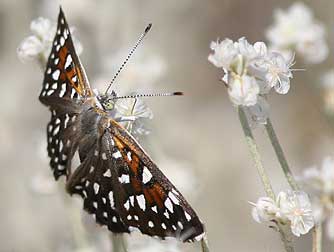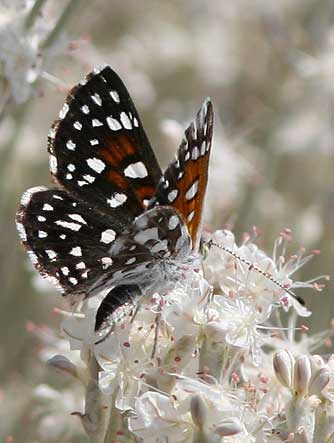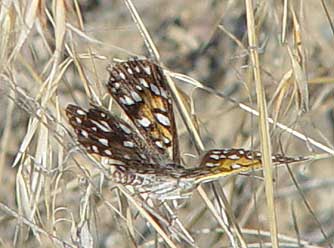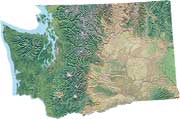
Mormon metalmark butterfly or Apodemia mormo
In eastern Washington, Mormon metalmark butterflies (Apodemia mormo) take to the wing in the fall when snow buckwheat and rabbitbrush bloom. Some of these pictures were taken in August, others in October. Buckwheat provides a source of late-season nectar and certain varieties of wild buckwheat, such as snow buckwheat, are host plants for this butterfly's larva. The butterfly lays lavender-colored eggs on buckwheat stems and leaves, where they overwinter and hatch the following spring.
Mormon metalmark butterflies have up to a 1-1/4 inch wingspan and long antennae (more than half the fore wing length), which has a slender, flattened club.
Mormon metalmarks have been listed as rare and threatened at the northerly extent of their range, just over the border in Canada. Their populations dropped because little or none of their habitat is conserved unused as natural land.

Mormon metalmark butterfly
nectaring on its host plant, snow
buckwheat or Eriogonum niveum

Mormon metalmark butterfly, mid-October

Mormon metalmark butterfly

